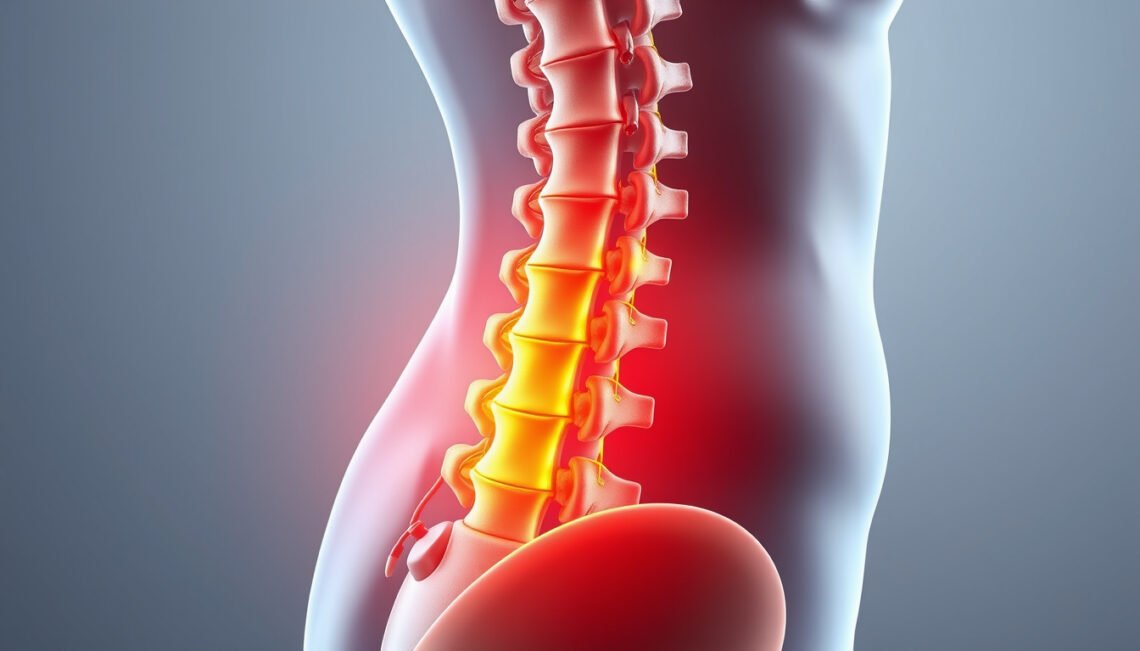Sciatic nerve inflammation is a common condition that affects millions of people worldwide. It occurs when the sciatic nerve, which runs from the lower back down through the legs, becomes irritated or compressed, leading to pain, numbness, and other uncomfortable symptoms. Understanding the causes, symptoms, and effective treatments of sciatic nerve inflammation is crucial for managing the condition and improving quality of life.
In this article, we will explore the main factors that lead to sciatic nerve inflammation, how to identify its symptoms, and the most effective treatment options to help you find relief.
What Is Sciatic Nerve Inflammation?
Before diving into the causes and symptoms, it’s essential to understand what sciatic nerve inflammation entails. The sciatic nerve is the longest nerve in the human body, extending from the lumbar spine down to the feet. Inflammation of this nerve typically results from irritation, compression, or injury, causing a condition commonly referred to as sciatica.
Sciatic nerve inflammation can produce symptoms ranging from mild tingling to severe debilitating pain. The condition can significantly impact daily activities, mobility, and overall well-being.
Causes of Sciatic Nerve Inflammation
Several factors can contribute to sciatic nerve inflammation. Identifying the root cause is the first step toward effective treatment. Some of the most common causes include:
-
Herniated Disc: One of the leading causes is a herniated or slipped disc in the lower spine. When the soft inner material of a spinal disc bulges out, it can press against the sciatic nerve, causing inflammation.
-
Spinal Stenosis: This condition involves the narrowing of the spinal canal, which puts pressure on the nerves, including the sciatic nerve.
-
Piriformis Syndrome: The piriformis muscle, located deep in the buttocks, can sometimes spasm or become tight, compressing the sciatic nerve.
-
Degenerative Disc Disease: Age-related changes to the spinal discs can lead to inflammation and irritation of the sciatic nerve.
-
Injury or Trauma: Direct injury to the lower back or buttocks area can inflame the sciatic nerve.
-
Other Causes: Less commonly, tumors or infections affecting the spine or surrounding tissues can lead to sciatic nerve inflammation.
Recognizing the Symptoms of Sciatic Nerve Inflammation
Symptoms of sciatic nerve inflammation usually manifest on one side of the body, following the pathway of the nerve from the lower back down to the foot. Common symptoms include:
- Sharp, burning or shooting pain radiating from the lower back or buttock down the leg
- Numbness or tingling sensations in the leg or foot
- Muscle weakness in the affected leg
- Difficulty moving or controlling the leg
- A feeling of "pins and needles" or electric shock
The severity of symptoms can vary widely. Some people experience mild discomfort, while others suffer from severe pain that limits mobility.

Effective Treatments for Sciatic Nerve Inflammation
Treating sciatic nerve inflammation centers around relieving pain, reducing inflammation, and addressing the underlying cause. Here are some of the most effective approaches:
1. Physical Therapy and Exercise
Physical therapy is often recommended as a first-line treatment. A specialized physical therapist can design exercises to:
- Strengthen the muscles supporting the spine
- Improve flexibility in the lower back and legs
- Reduce pressure on the sciatic nerve
Gentle stretching, strengthening exercises, and improving posture are essential components of therapy.
2. Medications
Over-the-counter pain relievers such as ibuprofen or naproxen can reduce inflammation and relieve mild to moderate pain. In more severe cases, doctors may prescribe:
- Muscle relaxants to ease muscle spasms
- Prescription anti-inflammatory drugs
- Oral steroids
- Nerve pain medications such as gabapentin
3. Cold and Heat Therapy
Applying ice packs shortly after onset can reduce nerve inflammation and swelling. After a few days, alternating heat therapy warms the muscles and improves blood flow, promoting healing.
4. Lifestyle Modifications
Making changes to daily habits can prevent worsening symptoms. Patients are advised to:
- Avoid prolonged sitting or standing
- Use supportive chairs
- Practice good posture
- Maintain a healthy weight to reduce spinal stress
5. Alternative Treatments
Some patients find relief through alternative therapies, including:
- Acupuncture
- Chiropractic adjustments
- Massage therapy
The effectiveness of these treatments varies individually, but they can complement conventional care.
6. Surgical Options
Surgery is usually a last resort for sciatic nerve inflammation when conservative treatments fail, or when symptoms worsen significantly. Procedures may involve:
- Removing herniated disc material
- Spinal decompression to relieve nerve pressure
Surgical intervention aims to address the source of inflammation directly.
Preventing Sciatic Nerve Inflammation
While not all cases of sciatic nerve inflammation are preventable, adopting healthy habits can greatly reduce risk:
- Maintain regular physical activity to keep the back muscles strong
- Use correct lifting techniques to avoid injury
- Maintain proper posture when sitting and standing
- Keep a healthy weight to minimize pressure on the spinal column
FAQ
Q1: How long does sciatic nerve inflammation last?
The duration varies depending on severity and treatment. Mild cases may resolve in a few weeks with conservative care, while chronic inflammation might persist for months if untreated.
Q2: Can sciatic nerve inflammation heal on its own?
Yes, many mild cases improve without aggressive treatment through rest, physical therapy, and anti-inflammatory medications. However, identifying and addressing the cause is essential to prevent recurrence.
Q3: What exercises help with sciatic nerve inflammation?
Stretching exercises like the piriformis stretch, hamstring stretch, and gentle yoga can help relieve nerve pressure. Consulting a physical therapist ensures exercises are done safely and effectively.
Authoritative Perspective
According to the Mayo Clinic, sciatica caused by sciatic nerve inflammation can often be managed at home with self-care, including cold and heat packs and over-the-counter medication, but persistent or worsening symptoms should be evaluated by a healthcare professional to avoid complications (source).
Conclusion: Take Control of Your Sciatic Health Today
If you’re suffering from sciatic nerve inflammation, don’t let the pain control your life. Understanding the causes and symptoms helps you take proactive steps toward effective treatment. From physical therapy and medication to lifestyle changes, multiple strategies exist to relieve discomfort and restore mobility.
Take action now by consulting a healthcare provider to receive a proper diagnosis and treatment plan. With the right care, you can reduce inflammation, manage symptoms, and get back to enjoying life free from sciatic pain. Don’t wait—start your journey toward healing today!






